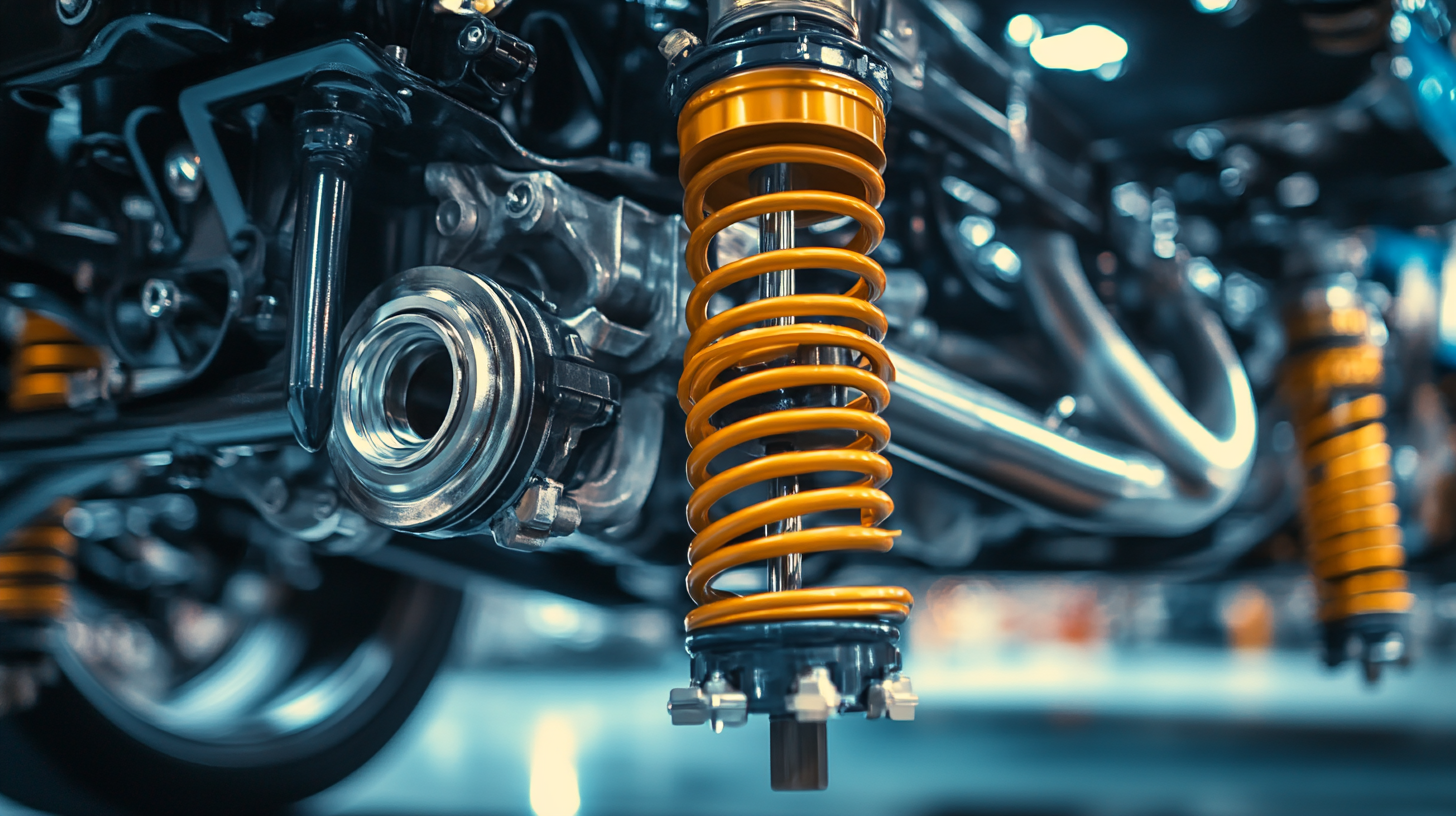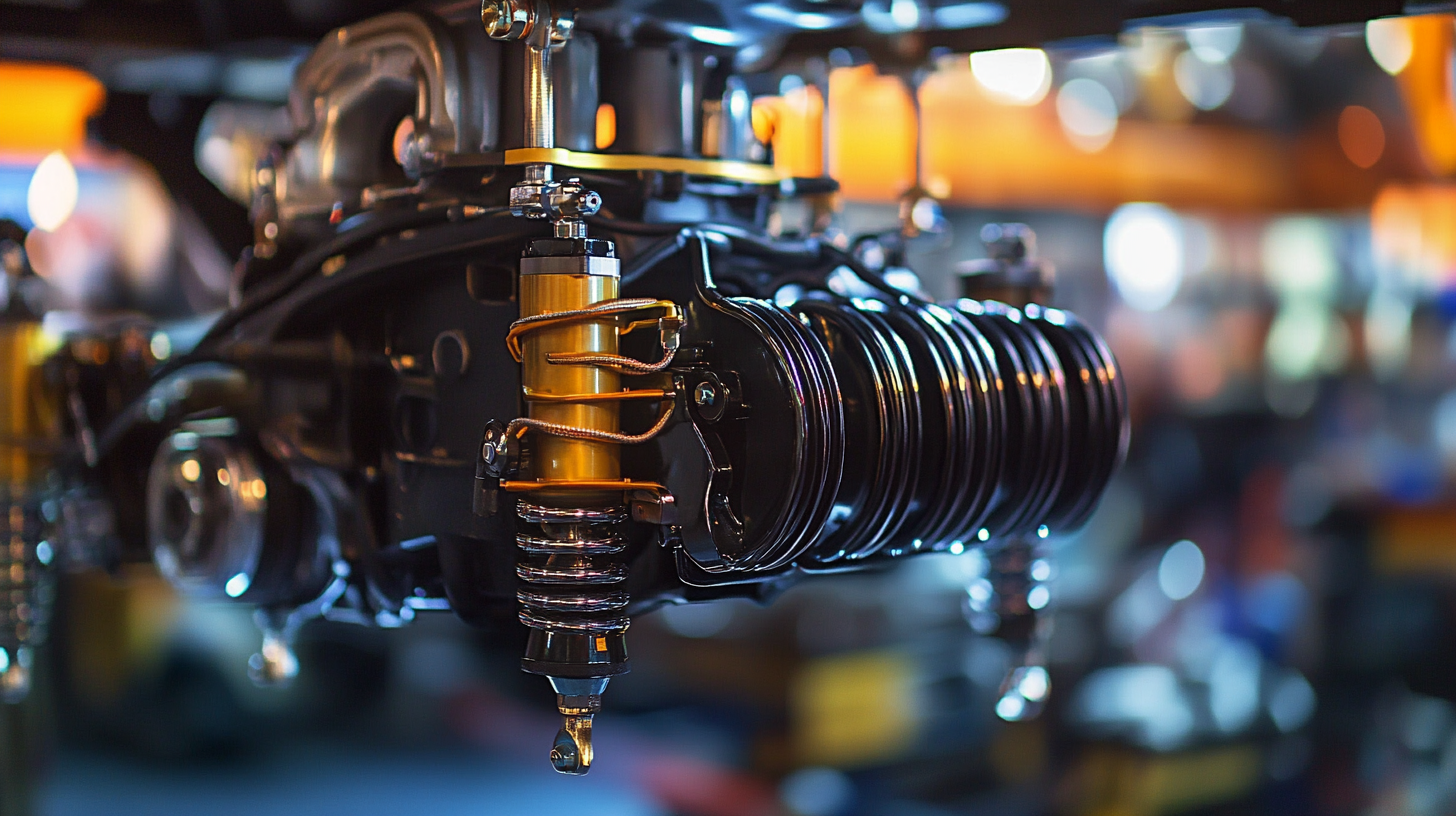Ultimate Guide to Choosing the Best Automobile Suspension System for Enhanced Vehicle Performance
In the quest for superior vehicle performance, selecting the right Automobile Suspension System is crucial. According to a report by Research and Markets, the global automotive suspension market is projected to reach $50 billion by 2027, driven by the increasing demand for enhanced driving comfort and safety. The suspension system plays a vital role in optimizing vehicle dynamics, ensuring stability, and improving ride quality. As automotive technology advances, understanding the intricate balance between comfort and performance becomes essential for vehicle owners and enthusiasts alike. This checklist aims to provide key considerations and insights into choosing the best suspension system, enabling drivers to make informed decisions that enhance both their vehicle's handling and overall performance.
Understanding the Importance of Suspension Systems in Automotive Performance
Understanding the importance of suspension systems in automotive performance cannot be overstated. A well-designed suspension system enhances vehicle handling, stability, and comfort while driving. According to a report by the Automotive Suspension Systems Market Analysis, a good suspension can improve traction by up to 30%, significantly increasing safety during cornering and braking. This becomes particularly evident in high-performance vehicles, where precision and control are paramount.
When choosing the right suspension system, consider these essential tips: First, assess your driving style and conditions. If you often navigate rugged terrains, consider a suspension designed for durability and off-road capability. Second, factor in the vehicle's weight—heavier vehicles may benefit from a stiffer suspension to prevent excessive body roll. Lastly, research reputable brands that offer customizable solutions to match your specific needs.
Moreover, the role of suspension goes beyond just comfort; it directly affects tire longevity and fuel efficiency. Systems with proper dampening can extend tire life by up to 20%, as uneven wear is minimized. Investing in a high-quality suspension system ultimately leads to better performance metrics and enhanced vehicle longevity.

Different Types of Suspension Systems and Their Impact on Vehicle Handling
When it comes to automobile performance, the suspension system plays a crucial role in determining how a vehicle handles on various terrains. There are several types of suspension systems, including independent, dependent, air, and coil spring systems, each impacting vehicle handling differently. Independent suspension systems allow each wheel to move independently, providing better grip and improved handling during cornering. This design is commonly found in modern vehicles, enhancing comfort and stability.
On the other hand, dependent suspension systems, often seen in trucks and SUVs, link the wheels together, which can lead to increased body roll and reduced maneuverability. However, they can offer greater durability and load-bearing capacity, making them ideal for off-road situations. Air suspension systems present a versatile option, allowing drivers to adjust the ride height and firmness, which can significantly improve handling, especially when loaded. By understanding these various suspension types and their impacts, vehicle owners can make informed choices to enhance their driving experience and performance on the road.
Ultimate Guide to Choosing the Best Automobile Suspension System for Enhanced Vehicle Performance
| Suspension Type |
Description |
Advantages |
Disadvantages |
Impact on Handling |
| MacPherson Strut |
A type of independent suspension that combines a shock absorber and a spring. |
Compact design, lightweight, cost-effective. |
Limited adjustability, not ideal for high-performance applications. |
Improves steering response and ride quality on smooth surfaces. |
| Double Wishbone |
A suspension system using two wishbone-shaped arms to control wheel motion. |
Great handling, better control of wheel camber. |
More complex and heavier than other systems. |
Provides superior cornering performance and stability. |
| Multi-Link |
A system that uses multiple arms to allow for greater wheel control. |
Excellent ride comfort, tunable for various performance needs. |
Increased complexity and potential maintenance issues. |
Enhances grip and cornering ability, improves handling on curves. |
| Leaf Spring |
Used primarily in rear suspensions, consisting of several layers of metal. |
High load capacity, simple design, cost-effective. |
Less effective in handling compared to independent systems. |
Provides good stability when loaded, but harsh ride quality empty. |
| Air Suspension |
Uses air-filled bags instead of traditional springs. |
Adjustable ride height, improved ride comfort. |
Higher cost, requires more maintenance. |
Can offer a smooth ride and adaptability to different loads. |
Key Factors to Consider When Selecting a Suspension System for Your Vehicle
When selecting a suspension system for your vehicle, there are several key factors to consider to enhance overall performance. First, the type of suspension plays a crucial role in determining ride quality and handling. Independent suspension systems, such as multi-link or double-wishbone setups, provide better handling and comfort compared to traditional beam axles. Understanding what your primary use is—whether for daily commuting, off-road adventures, or high-performance driving—will help you make an informed choice.
Next, consider the height of the suspension. For instance, vehicles with adjustable ride heights allow for customization based on driving conditions and personal preferences. A lower ride height can improve aerodynamics and handling, while a higher set up can enhance off-road capability and clearance. The compatibility of the suspension system with other components, such as tires and braking systems, should also be assessed to ensure optimal performance and safety on the road.
How to Evaluate Suspension Brands: Quality, Performance, and Innovation
When selecting an automobile suspension system, evaluating suspension brands is crucial for ensuring quality, performance, and innovation. Start by researching the brand's reputation within the automotive community. Look for user reviews and expert opinions to gauge customer satisfaction and durability. A well-regarded brand typically provides reliable products backed by solid warranties, which serve as an indicator of their confidence in performance.
Tip: Always consider the specific needs of your vehicle and driving style when comparing suspension systems. Some brands excel in producing off-road suspensions, while others may focus on performance enhancements for racing. Identify what features matter most to you—such as ride comfort, handling response, or adjustability.
In addition, investigate the technological advancements each brand incorporates into its systems. Emerging technologies like adaptive dampers or lightweight materials can significantly enhance vehicle performance. Understanding these innovations will help you make an informed choice that aligns with your commitment to quality and performance.
Tip: Don't hesitate to reach out to automotive forums or communities where experienced users can share their insights. Engaging with other enthusiasts will not only widen your perspective but also help you discover lesser-known brands that may offer exceptional value.
The Future of Suspension Technology: Trends and Advancements in the Industry
The future of suspension technology is poised for revolutionary changes as advancements in materials science and engineering techniques continue to evolve. One of the most exciting trends is the increasing adoption of adaptive suspension systems. These systems utilize sensors and algorithms to automatically adjust suspension settings in real time, providing optimal comfort and handling based on road conditions and driving styles. This smart technology not only enhances vehicle performance but also improves safety, making rides smoother and more enjoyable for both drivers and passengers.
Another significant advancement is the incorporation of lightweight materials such as carbon fiber and advanced alloys in suspension components. This innovation not only reduces the overall weight of vehicles, enhancing fuel efficiency, but also improves handling and ride dynamics.
Furthermore, with the rise of electric vehicles, suspension systems are being designed to accommodate heavier battery packs while maintaining performance standards.
As manufacturers continue to innovate, we can expect to see more integrated approaches that marry electronics with mechanical systems to create truly intelligent suspension solutions that cater to the demands of modern driving.







